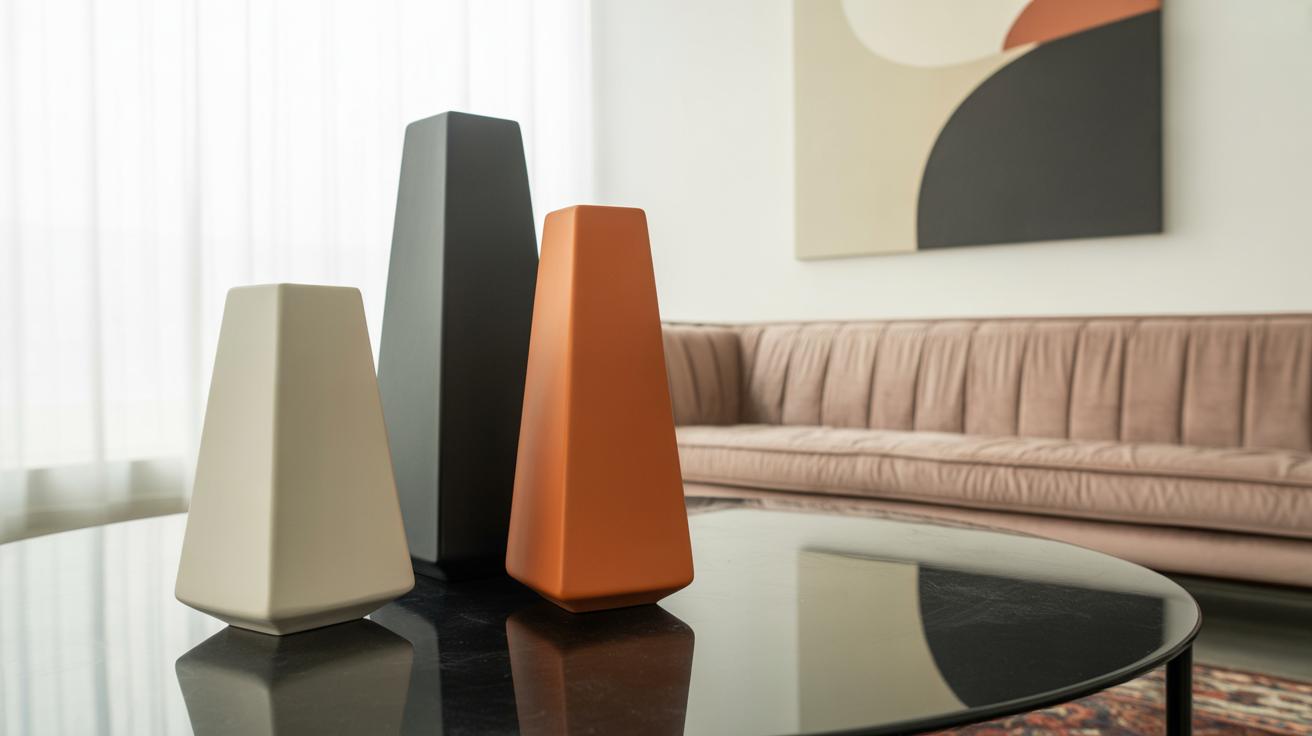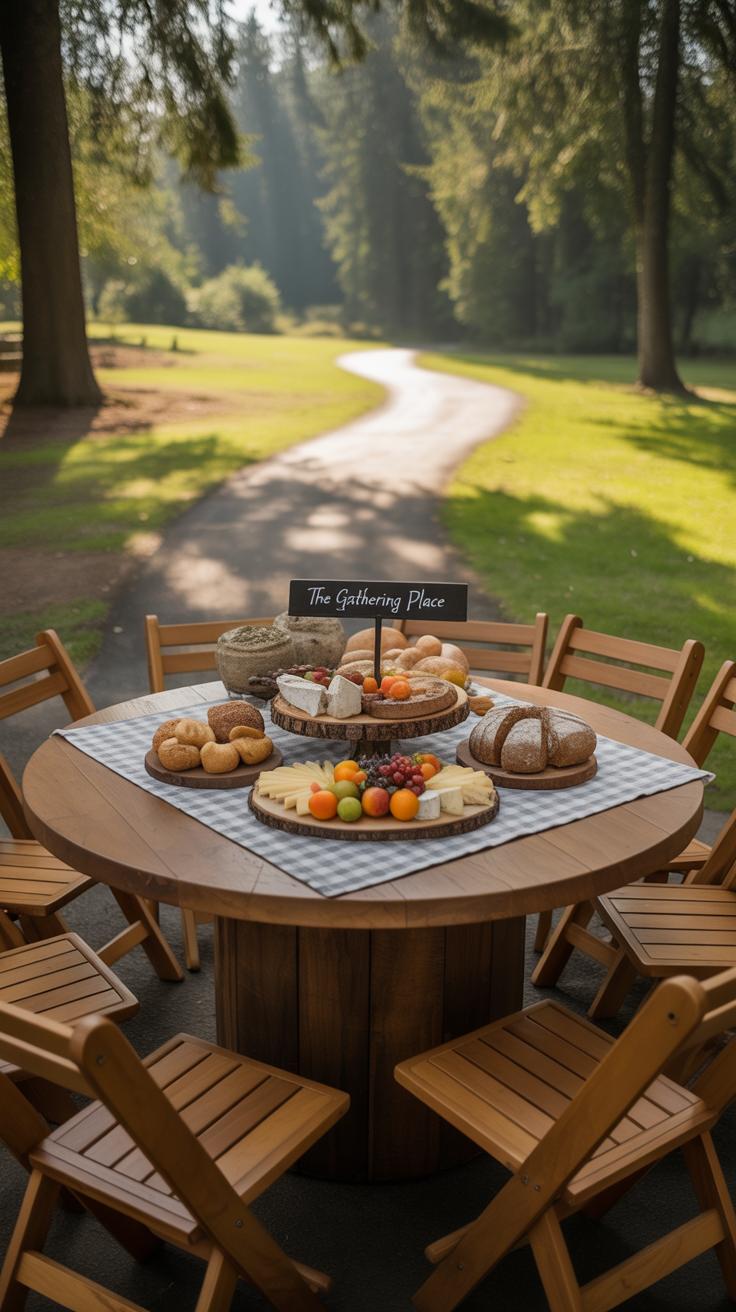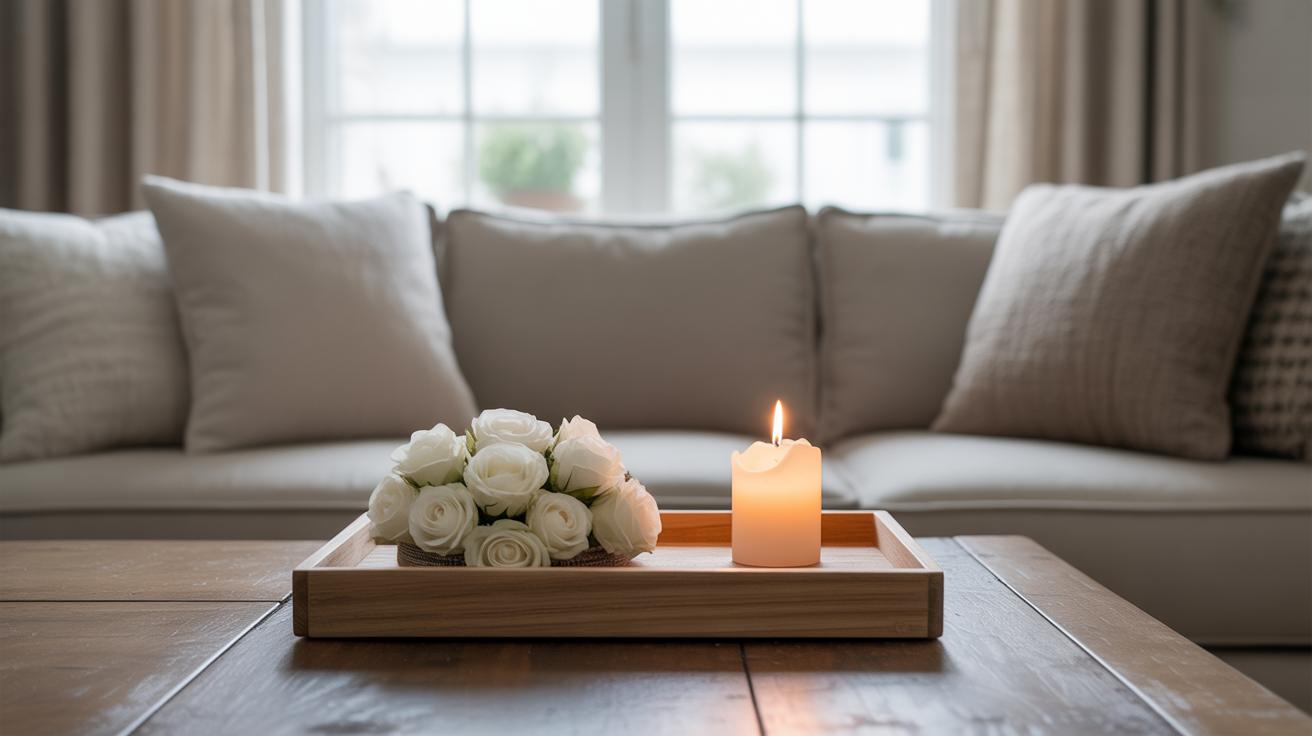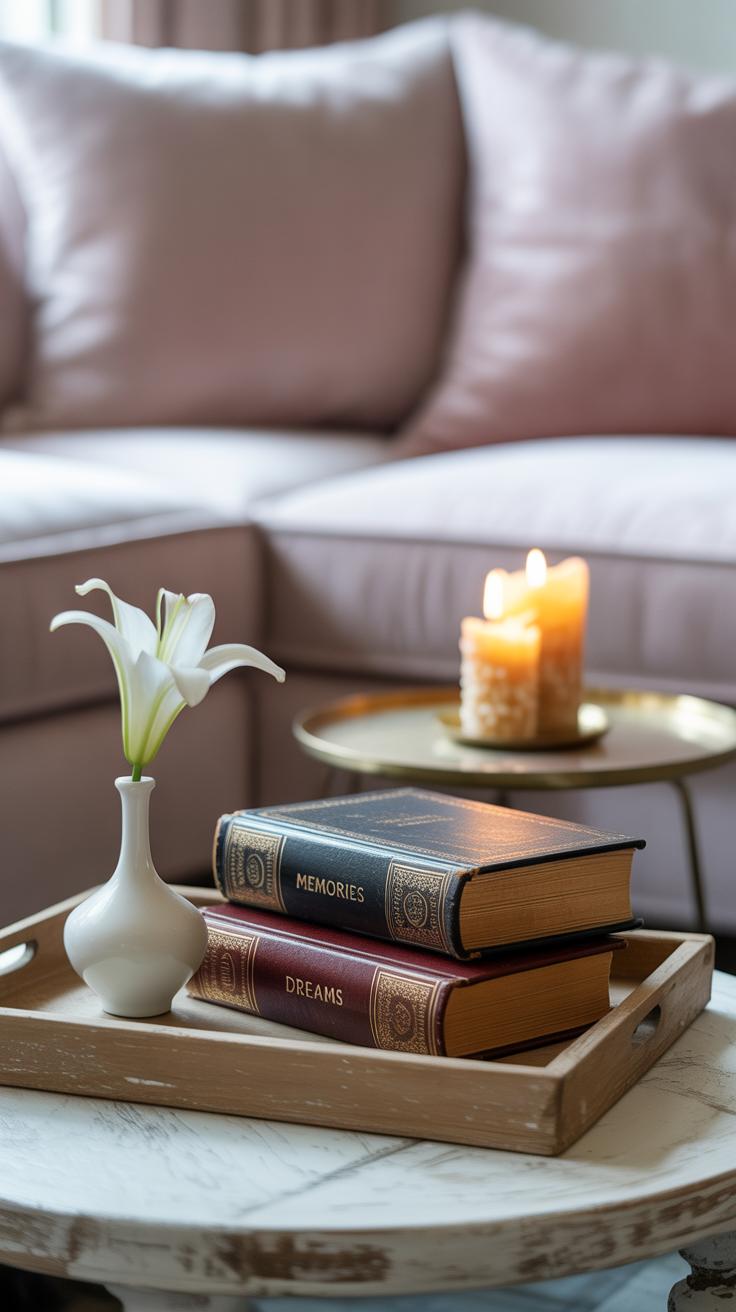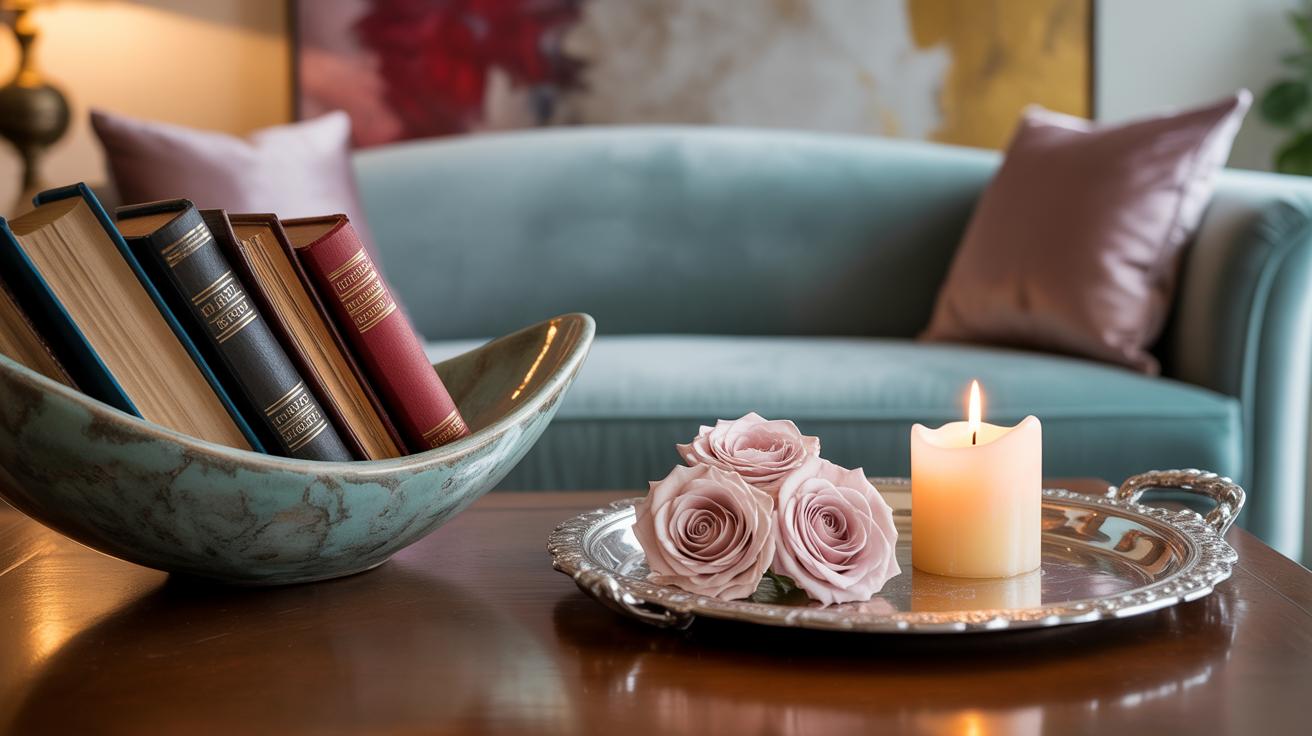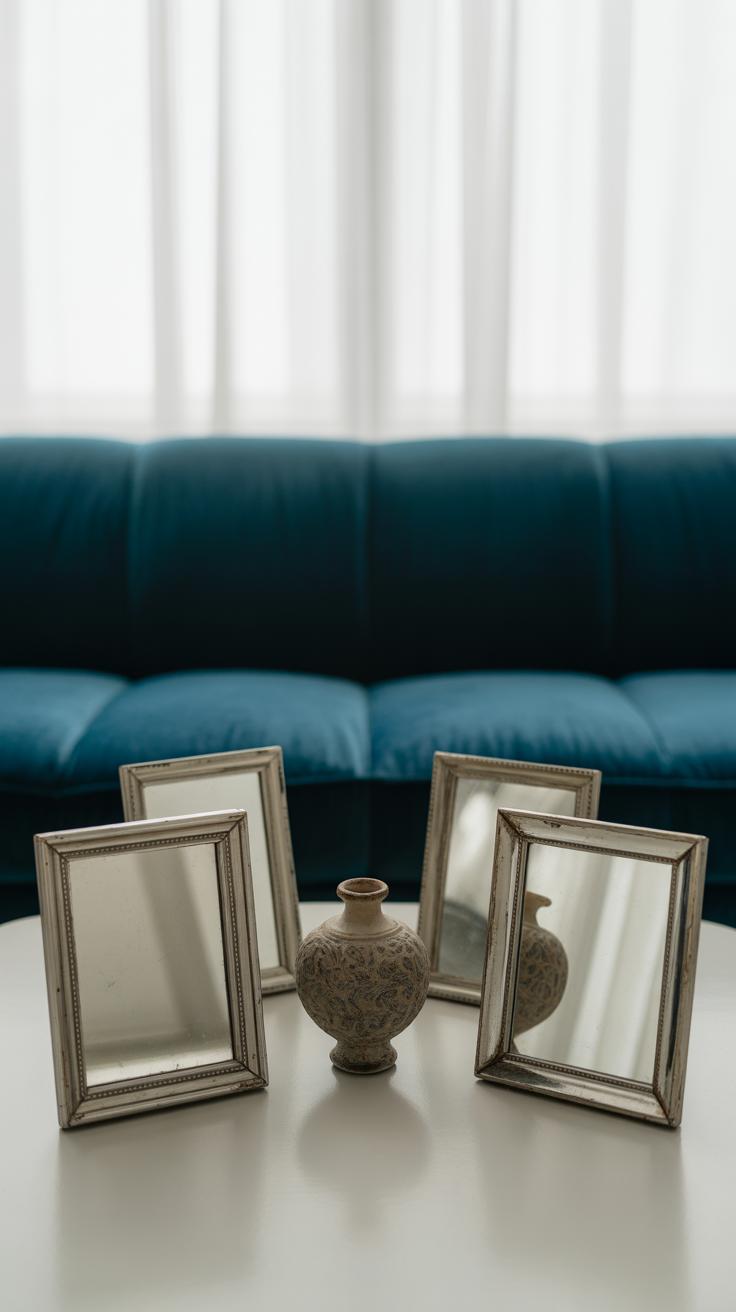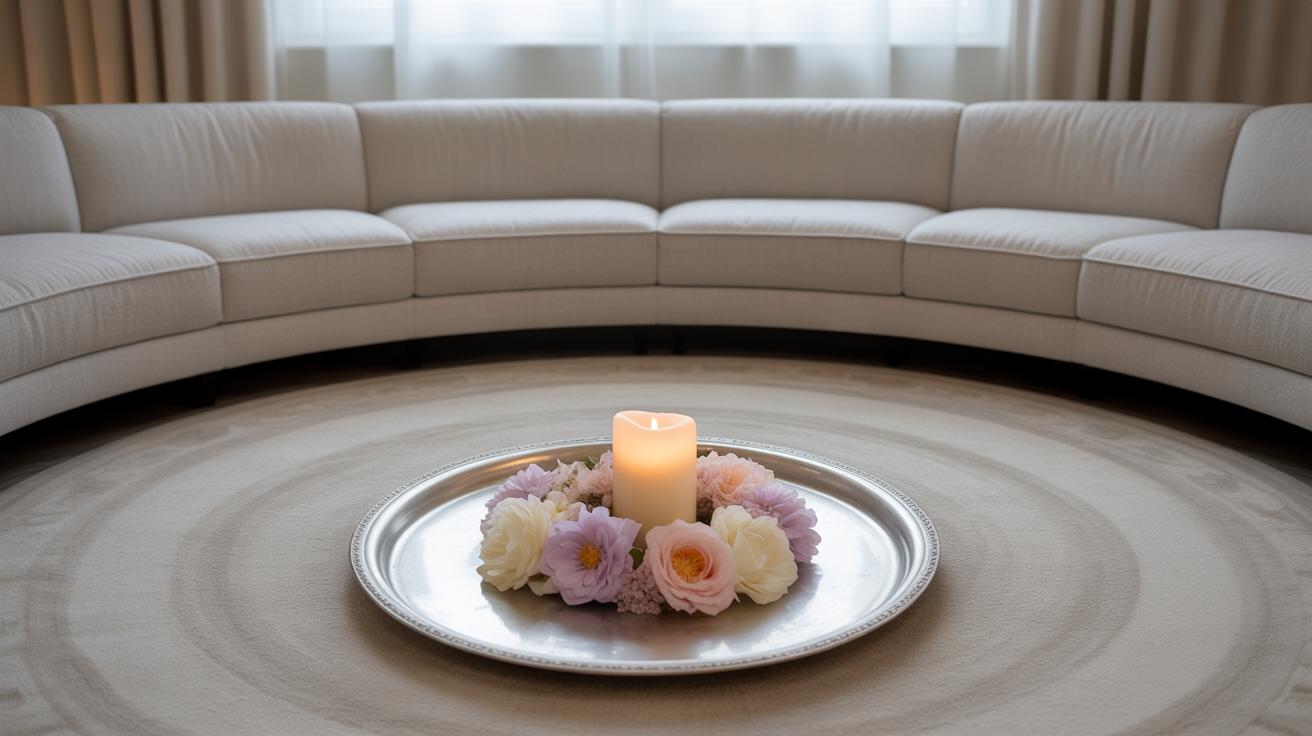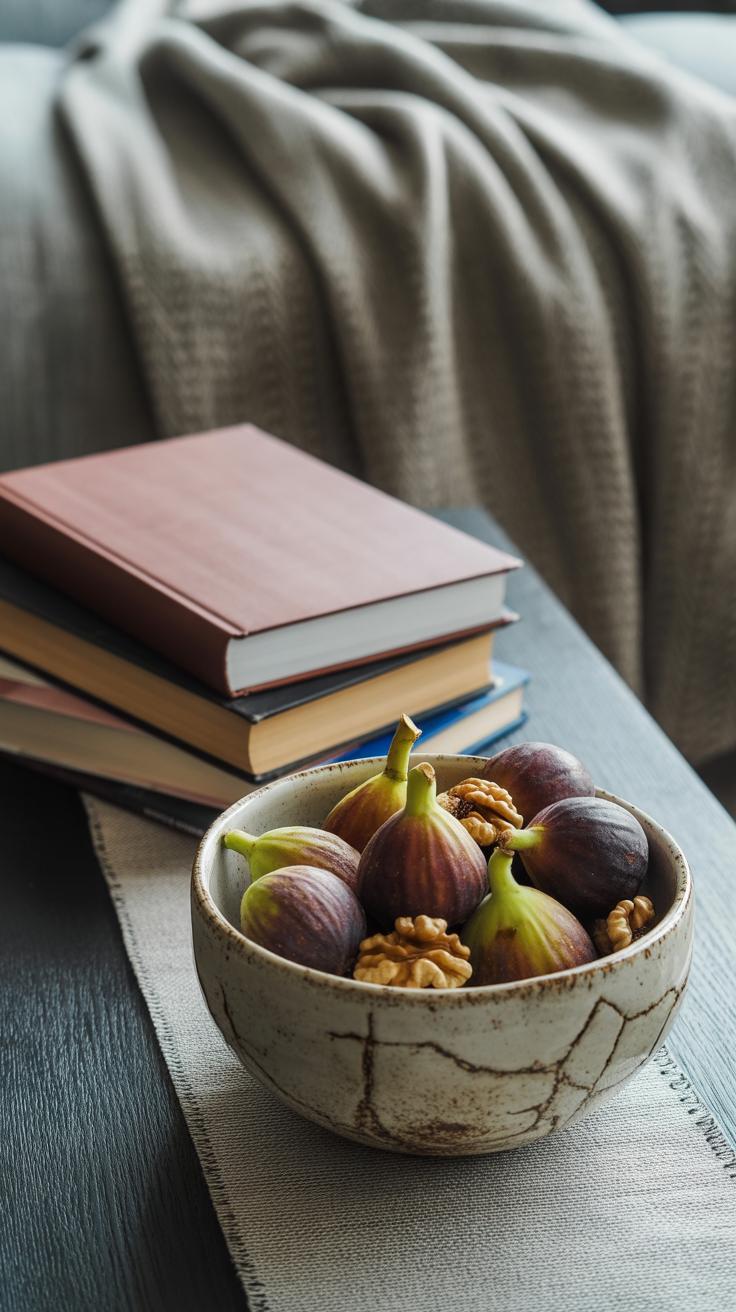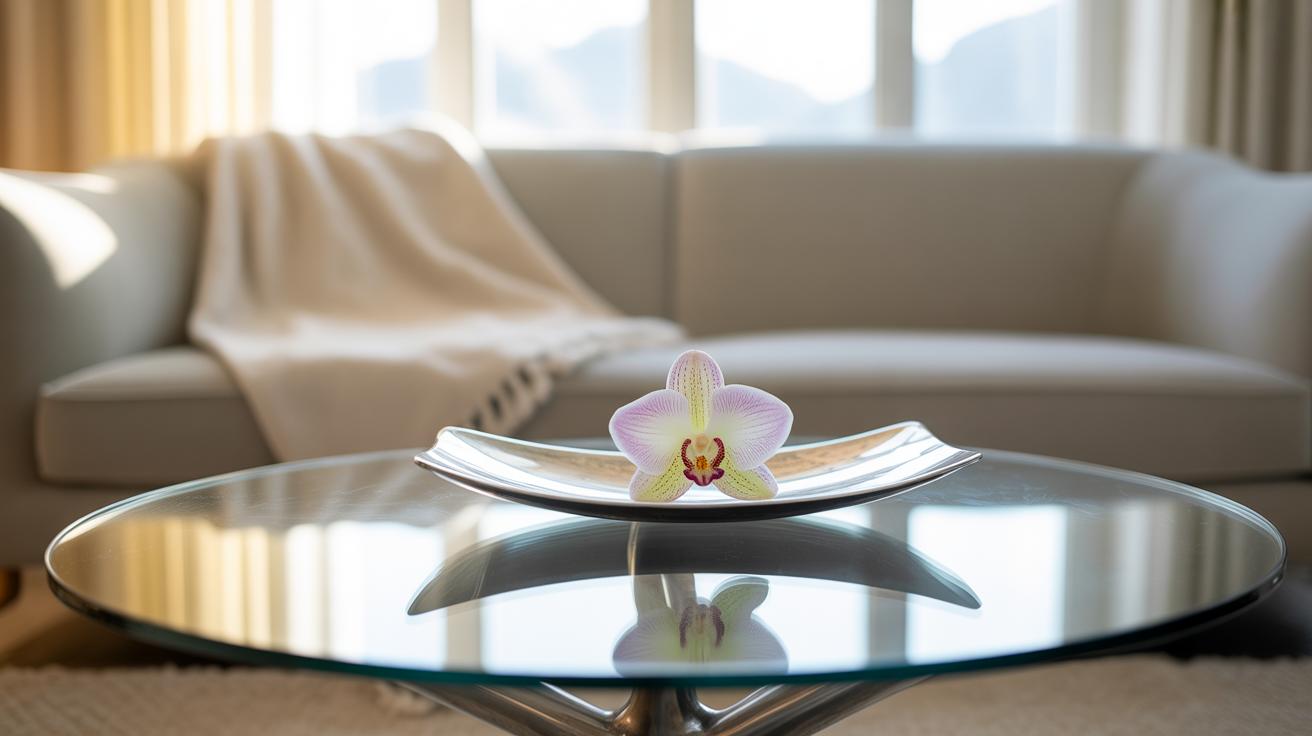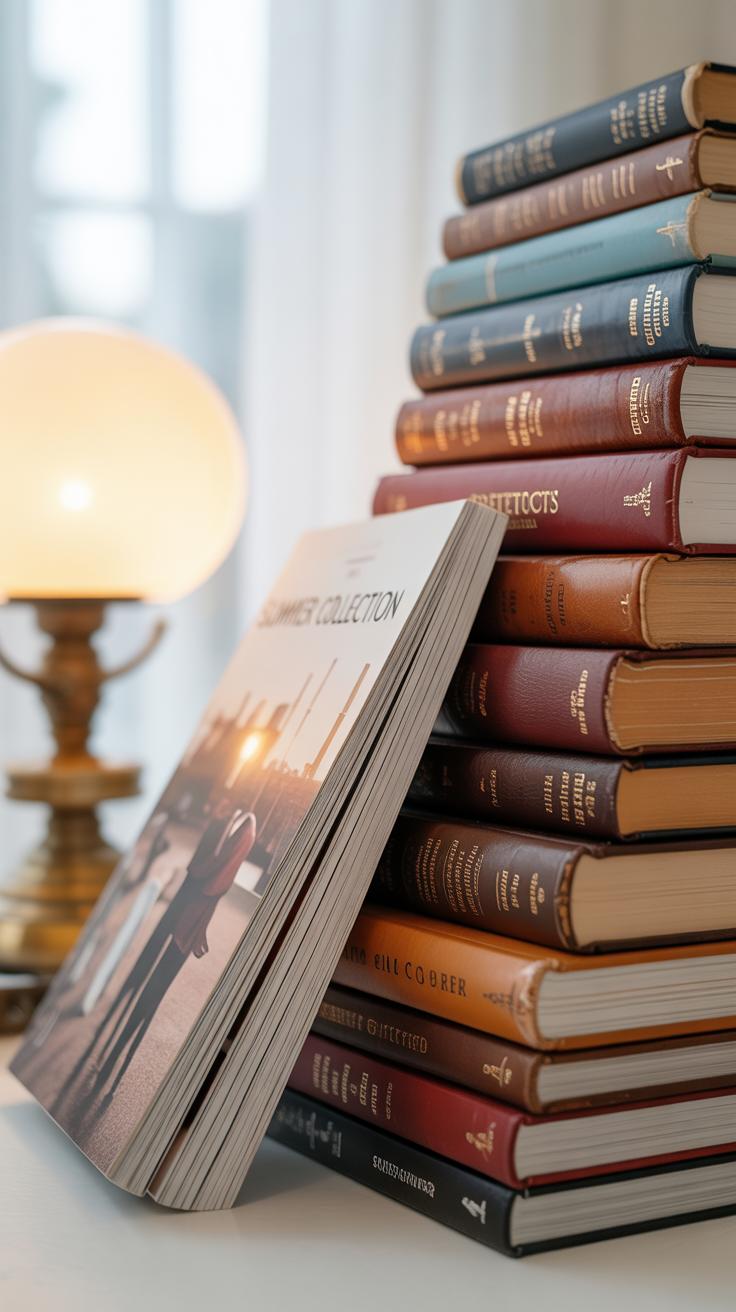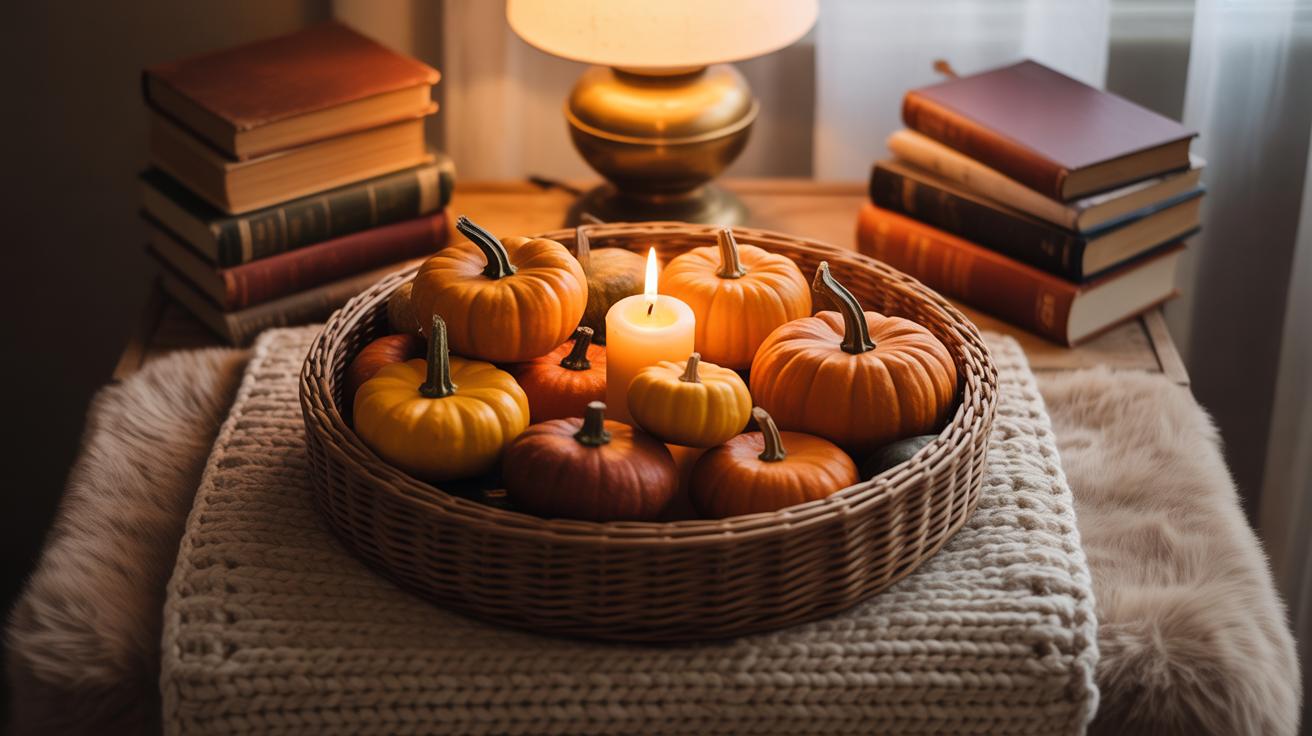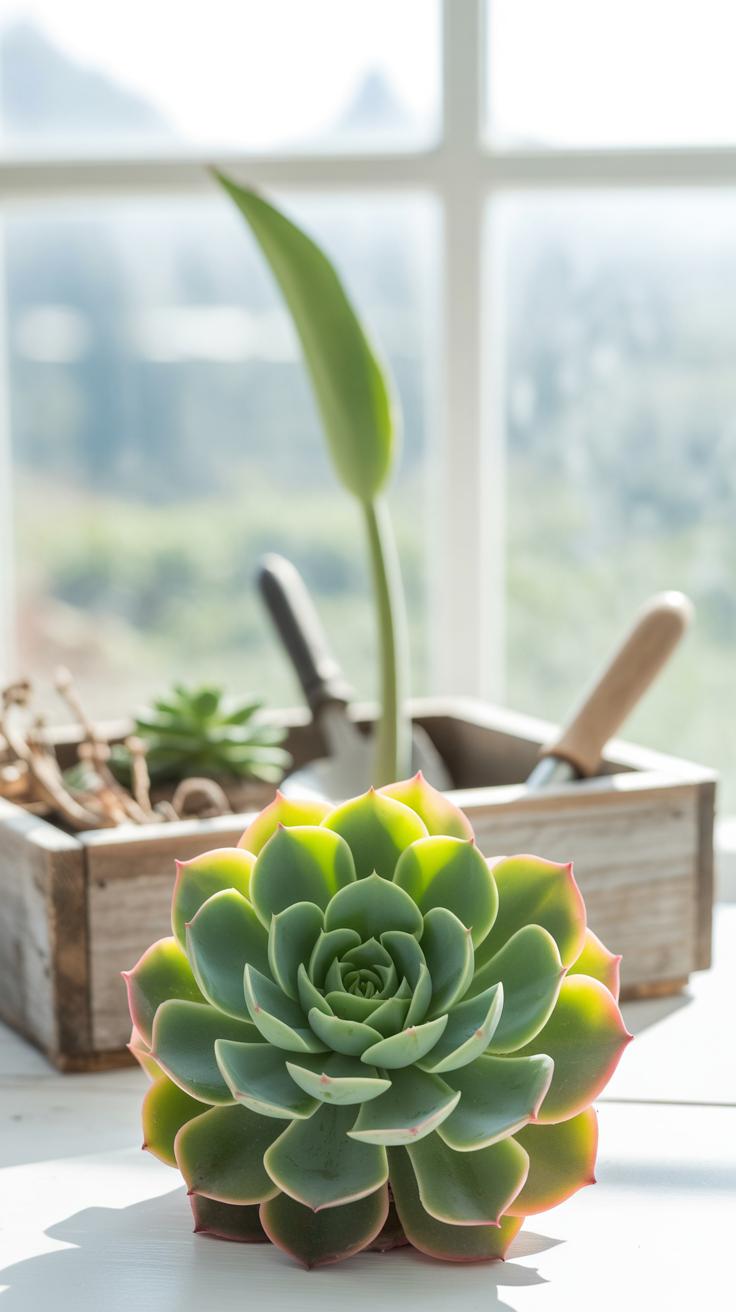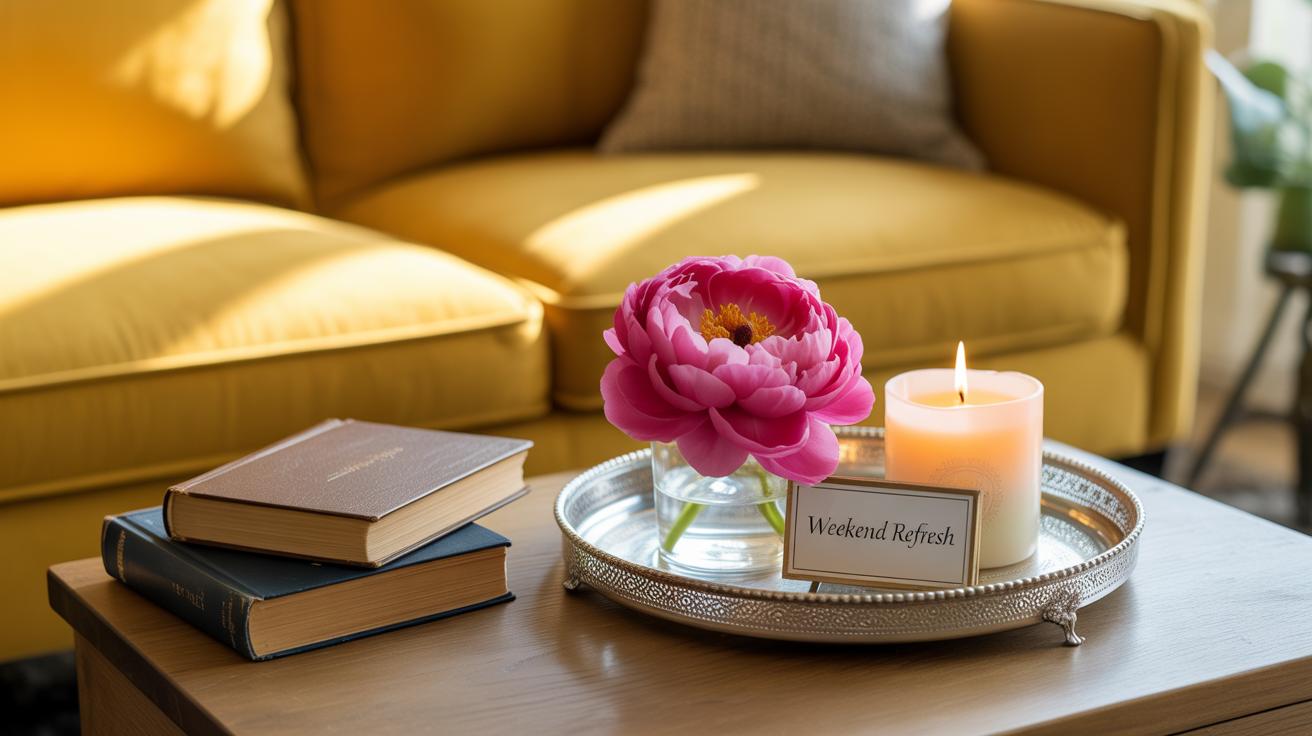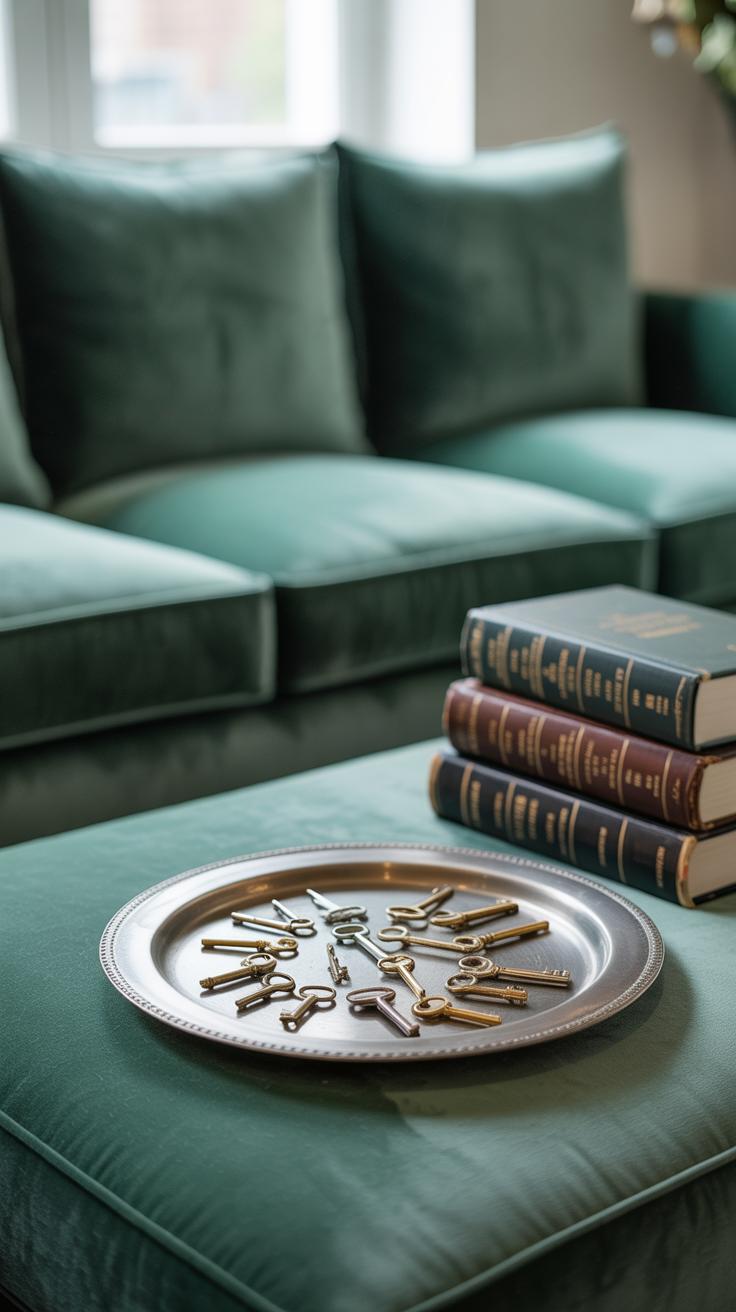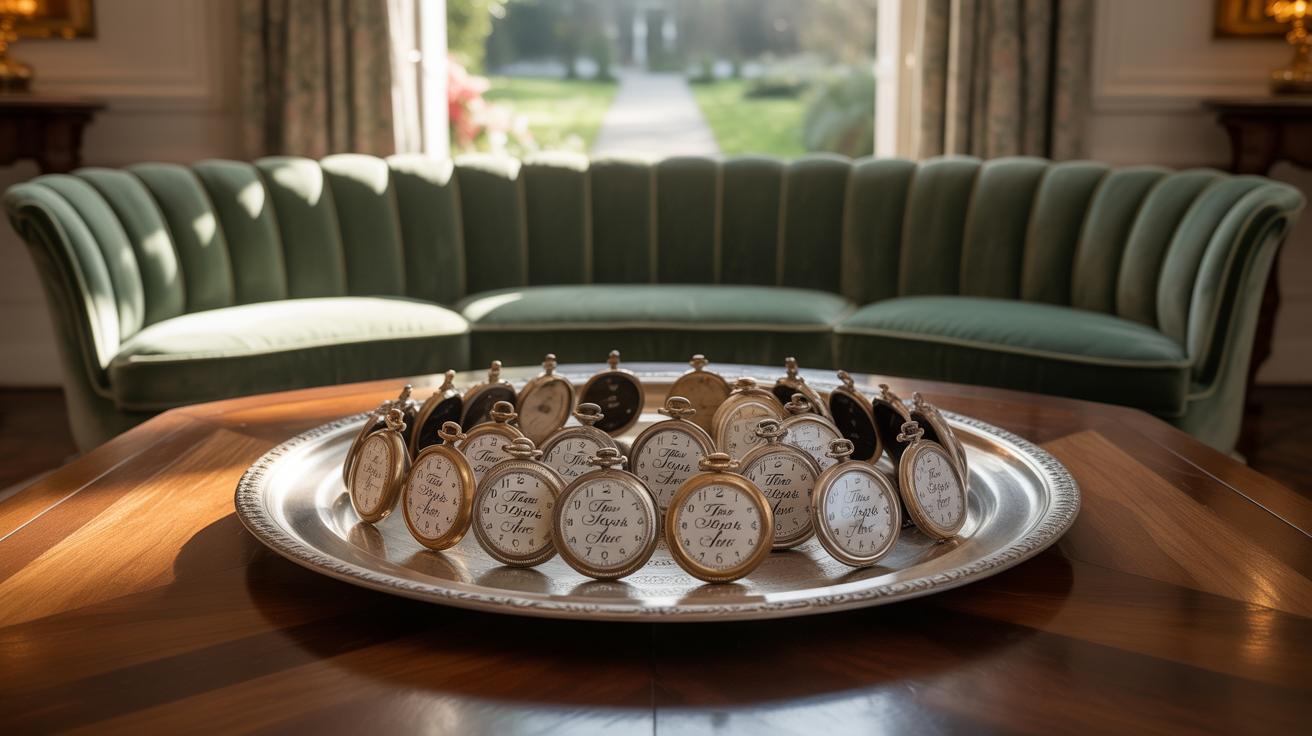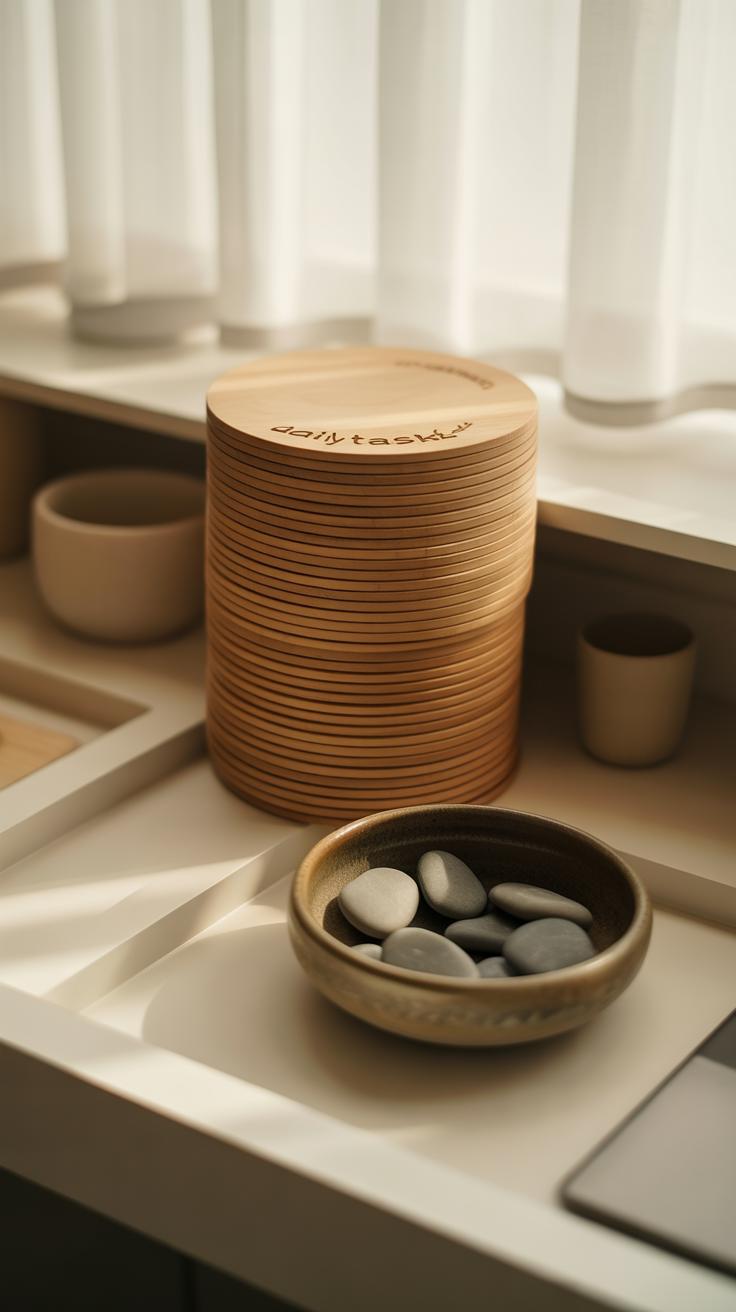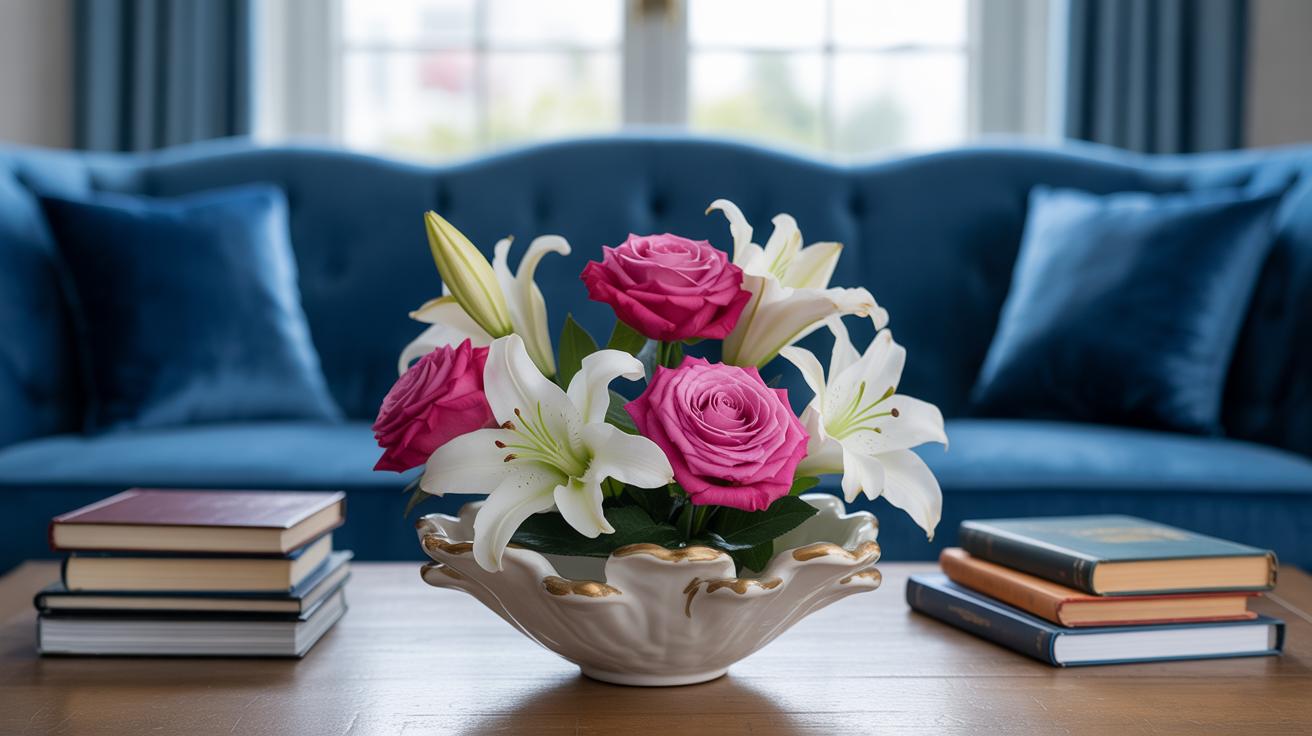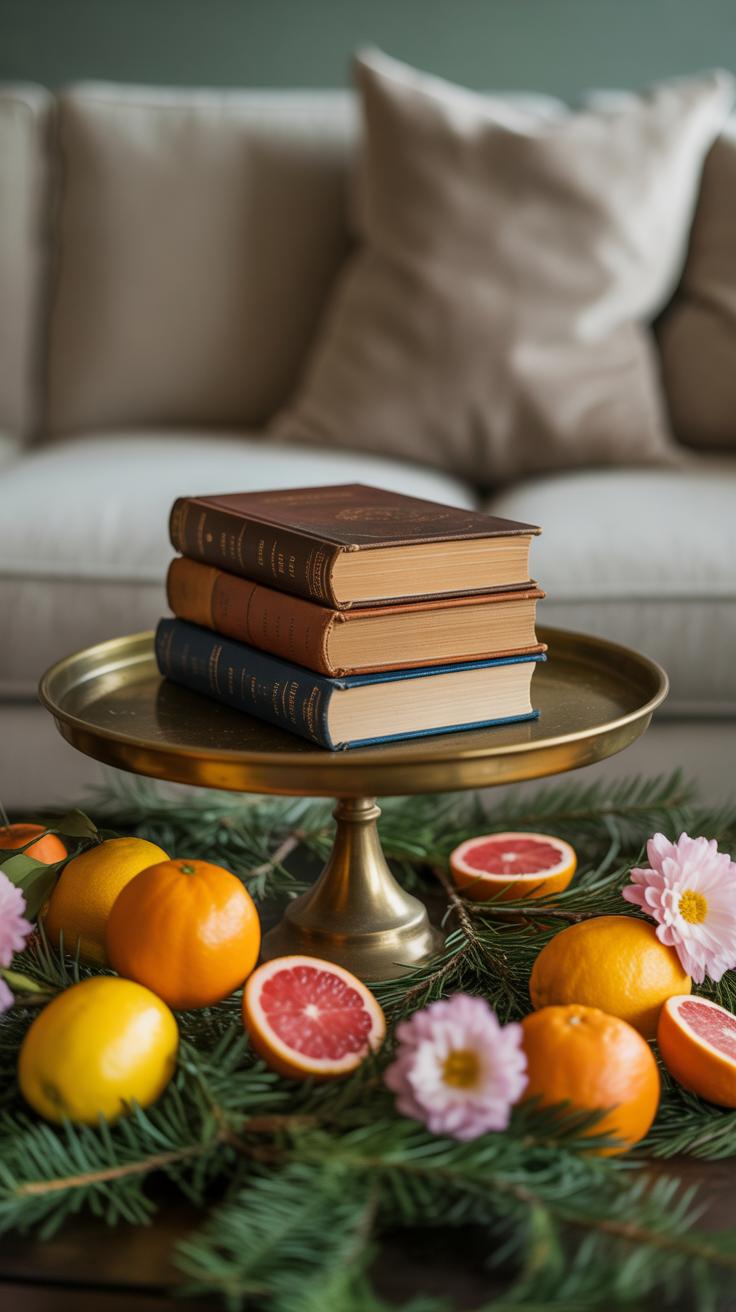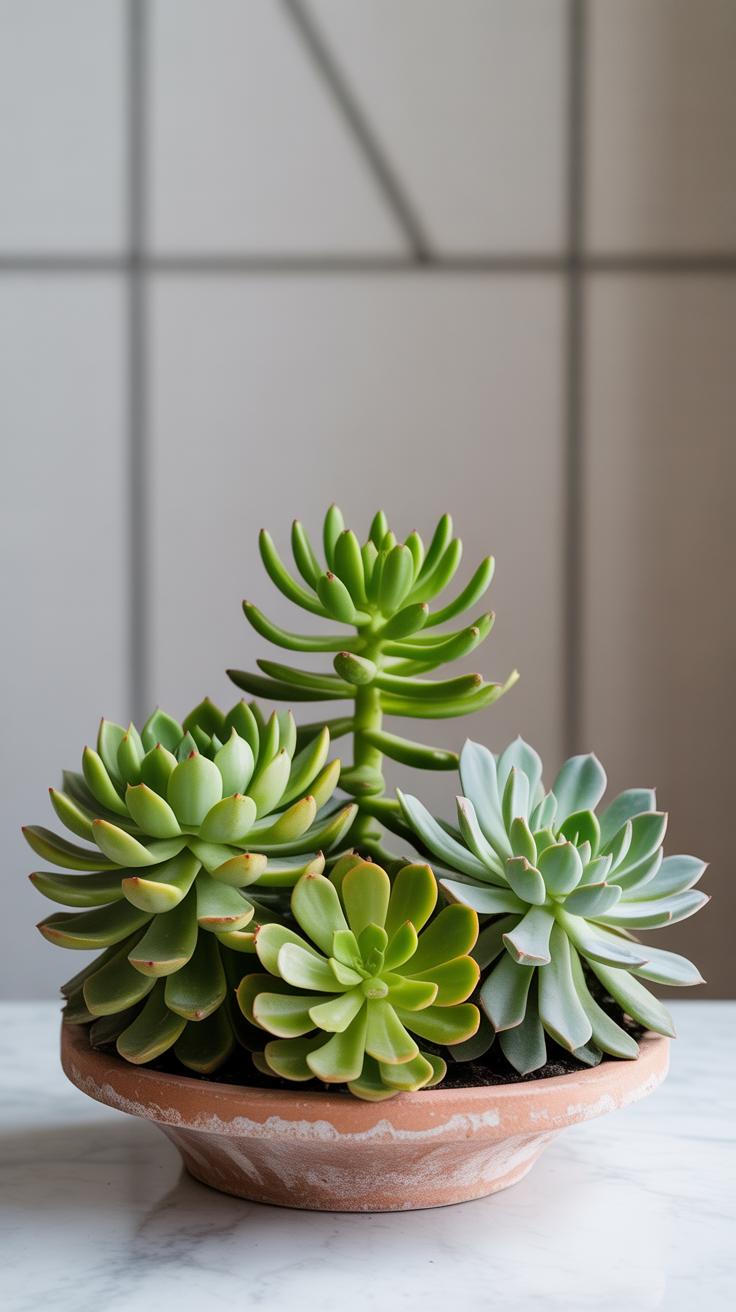Introduction
Your coffee table is often the centerpiece of your living room. Styling it well can make the entire space feel welcoming and polished. There are specific rules that you can follow to style your coffee table beautifully. These rules are easy to understand and apply once you get to know them. They help create a look that is both neat and inviting.
In this article, we explore Coffee Table Styling Rules That Make Any Room Look Polished. You will learn how to pick the right items, arrange them, and keep everything balanced. This will give your living room a fresh and organized feel that impresses guests and feels cozy for you.
Understanding the Role of a Coffee Table in Your Room
What Makes a Coffee Table Different
A coffee table isn’t just any table. Its size, height, and placement set it apart from end tables or dining tables. Usually low and centrally located in front of a sofa or seating area, it’s designed to be accessible without interrupting movement in the room.
Think about it: you don’t want something too tall or bulky there. It needs to fit comfortably under your reach but not block sightlines or crowd the space. This balance shapes how you style it. Because it’s so visible and central, styling choices impact the entire feel of the room, making it feel either cluttered or carefully curated.
How Your Coffee Table Serves You
Beyond aesthetics, the coffee table performs practical roles. It holds drinks, snacks, books, remote controls — those everyday items that don’t have another home. Depending on your lifestyle, it might be a spot for work materials or a place where kids spread out their games. This daily use influences how much you want to display versus keep clear.
Styling can either protect its function or hinder it. A well-styled table balances decorative objects with open space — enough layers to create interest, but still room for your cup or laptop. How often you use the table and for what can guide what you put on it and how you arrange those items. Sometimes simplicity works best; other times, a bit of abundance suits the mood.
Choosing the Right Items to Display
When picking what to put on your coffee table, think beyond just filling space. Choose items that feel right for the room’s style and your own taste. For example, if your room leans modern, sleek objects with clean lines work well. But if your space is cozy or rustic, you might want something warmer, like textured coasters or a small wooden bowl.
Popular decorative favorites often include:
- Stacked coffee table books—large and visually interesting
- Small plants or succulents—they bring life and a touch of nature
- Trays for containing smaller items—help keep things neat and layered
- Candles or decorative objects with a unique shape
Why do these work? Books add height and intrigue. Plants soften harder surfaces. Trays create organized sections. Together they offer variety without chaos.
Besides beauty, think about usefulness. A tray can corral remotes, coasters keep surfaces safe, and a stylish bowl might hold keys or change. The trick is to keep useful objects integrated, not just dropped on the table. Avoid overcrowding; every item should feel deliberate but also ready to be used.
Creating Balance and Symmetry
Balance plays a key role in making your coffee table look polished. When you arrange objects of varying sizes and shapes thoughtfully, the table stops feeling cluttered and starts to feel composed. It’s like your eyes can rest on each item without getting overwhelmed. Sometimes, I find that perfectly symmetrical setups can seem a bit stiff. So, leaning towards balance—without forcing exact symmetry—often works better. It keeps things interesting but still orderly.
Why does this matter? Well, uneven arrangements tend to look accidental or chaotic. While asymmetry can be artistic, on a coffee table you usually want a calm, inviting vibe. When you balance a taller vase with a stack of books on the opposite side, or place a low tray next to a small plant, your table exudes harmony. Different heights, shapes, and textures help catch the eye, but balance pulls it all together.
To achieve this balance, try a few simple steps:
- Group items in odd numbers—three or five pieces often feel natural.
- Anchor one side with a larger piece, then balance with smaller objects opposite.
- Use trays or bowls to corral smaller items; it helps keep everything neat.
- Leave some empty space to avoid overcrowding. Silence, even on a table, has its place.
Just play around with your items. Move things slightly, step back, see what feels comfortable. There’s no single “right” formula, but if your coffee table looks like it’s holding a conversation instead of screaming for attention, you’re on the right path.
Using Color and Texture to Add Interest
Colors and textures on your coffee table aren’t just decoration—they’re key to making the space feel connected and alive. When picking colors for your coffee table items, think about the room’s palette. You don’t have to match everything exactly, but keeping within the same family or tones helps the table blend naturally with the surroundings. For example, if your room leans toward warm neutrals, bringing in a soft terracotta vase or a deep brown candle can tie things together without shouting for attention.
Texture adds a layer of complexity. Smooth surfaces, like glass or polished ceramic, catch light differently than a rough woven basket or a soft linen cloth. Mixing these textures works well—you might place a sleek tray next to a chunky knit coasters set or a rough wooden bowl beside smooth stacked books. This contrast isn’t always about balance or perfect symmetry, but about creating a sense of touch and variety that draws your eye and invites closer look.
Picking textures can feel a bit unpredictable—sometimes a rough, unfinished element even in a modern space surprisingly brings warmth. The key is to choose tactile pieces that feel like they belong together, even if they aren’t matching. You might find that combining textures in unexpected ways makes your coffee table feel both curated and effortless. So, what textures do you feel your room is missing?
Arranging Books and Magazines Stylishly
Stacking Books for Impact
When stacking books on your coffee table, think beyond just piling them up. Try grouping them by size first. Place the larger, heavier books at the bottom to create a stable base. A stack that gradually tapers upward tends to feel more natural and inviting. Sometimes, arranging by color works well, especially if your books have coordinating covers. It can create subtle harmony without overwhelming the space.
There’s also the option of organizing books by theme—travel guides, art, or design books can speak to your personality and spark curiosity. I’ve noticed, though, that too much uniformity can feel stiff. So maybe mix up a colorful stack with a more neutral one elsewhere on the table. Stacking isn’t about perfection but finding a rhythm that feels right to you.
Displaying Magazines with Flair
Magazines can be tricky—they beg to be browsed, yet they clutter quickly. To keep the table neat, consider fanning a few recent issues with their covers visible. This invites guests to pick one up without flipping through a messy pile.
An alternative is a shallow tray or a slim magazine holder. It offers control over the pile but still keeps things accessible. You might limit the number to just two or three current favorites to avoid overwhelming the surface.
One odd thing I’ve found: sometimes, showing magazines with slightly different orientations—some stacked flat, others leaned—can look more lived-in and authentic. It’s less about rigid tidiness and more about inviting interaction without chaos.
Adding Plants and Greenery
Plants on coffee tables have a way of making any space feel alive, don’t they? There’s something about greenery that instantly freshens a room and adds a touch of softness among harder surfaces. But choosing the right plant isn’t just about picking what looks nice. You want something that fits your lifestyle and, frankly, your patience level for plant care.
Low-maintenance plants tend to work best. Succulents, small snake plants, or even air plants are favorites because they don’t need constant watering or perfect light. A tiny pothos or a ZZ plant can also survive on neglect better than you’d expect, which makes them great for a coffee table spot where you might overlook them sometimes.
When placing plants, think about balance. A single leafy plant can complement a stack of books or a decorative object, breaking up the arrangement with a natural element. Try grouping one or two small plants near a tray or in a corner that gets some indirect light. More than that, though, and it can quickly feel cluttered or overdone.
Care is pretty straightforward, but it’s tricky if your table is in a dark corner or right next to a heater. Check the light needs of your plant before settling on one. And watering? Less is often more—better to underwater than drown most coffee table plants. Use a small, matching pot for a clean look, or go for texture contrast if you want a bit of a visual punch.
Incorporating Decorative Trays
Using a decorative tray on your coffee table can change everything, really. It helps corral smaller items that might otherwise feel scattered or messy. Think about remotes, coasters, candles, or that small stack of books you always have nearby. When you place these on a tray, each item feels intentional, like it belongs.
Trays come in many forms. There are shallow ceramic ones that work great for a modern room, and rustic wooden trays that bring warmth. Then metals, sometimes with a sleek finish or a bit of patina, add an edge or a touch of elegance. Even glass trays can pull a look together, especially if your table is busy or has a bold pattern. Each type serves slightly different purposes—wood adds coziness, metal feels sharp and clean, glass keeps things light.
Choosing Tray Materials and Sizes
Picking the right tray means considering your table’s size and the overall room vibe. A large tray on a small table? That may crowd your surface, defeating the purpose. On the flip side, a tiny tray on a big table can look like an afterthought. Try measuring your table and imagine a tray taking up about one-third to half the space. That usually feels balanced.
Material also interacts with your décor. Wood often pairs well with natural or traditional interiors. Metal fits industrial or contemporary themes, while glass suits more minimalist or eclectic spaces.
How to Use Trays Effectively
Once you have your tray, arrange items so they look coordinated but not too forced. Mix heights and shapes: a candle, a small vase, a stack of books, or even a simple decorative object. Leave some empty space—don’t cram it completely; that’s how things go from neat to cluttered.
I often find that grouping items in odd numbers, like three or five, works better visually. And layering helps too—placing a small book under a candle can elevate the overall composition. Trays also become natural conversation starters; guests tend to notice these curated clusters, and it makes the table feel done without trying too hard.
Maintaining Function While Styling
When styling your coffee table, it’s tempting to pile on decorative pieces until it almost looks like a mini art installation. But think about how you actually use that table day-to-day. Drinks, snacks, remote controls—all those everyday essentials need some breathing room. The goal isn’t to turn the coffee table into a museum piece; it’s to keep it usable while still looking polished.
Leaving open space for practical items is really key. You might want to keep at least one clear corner or an area free from clutter so it’s easy to place your coffee mug or rest your phone without knocking something over. It’s a simple thing, but it makes the table feel inviting, not just styled for photos.
One way to balance decoration and function is by choosing multipurpose items. A beautiful bowl can hold keys or coasters, a stylish box can hide remotes, and a stack of books can double as a slight riser or a catch-all for small things. These pieces keep your table attractive yet sensible. It’s odd how mixing a few practical touches with style can make the whole space feel more lived-in and welcoming, rather than staged or fussy.
Adapting Styles to Different Seasons
Changing your coffee table styling with the seasons keeps your living space feeling fresh, without needing a full makeover. It’s about small swaps that make a subtle but noticeable difference. For example, you might exchange a bright, floral arrangement in spring for a bundle of dried wheat or pinecones as fall approaches. These kinds of seasonal touches can shift the entire mood of the room.
Try swapping out cushion colors or adding a seasonal candle. A pale blue vase in winter can become a warm terracotta pot in autumn. It doesn’t take much—sometimes just one or two pieces — to hint at the season and invite a different kind of warmth or energy.
Seasonal Color and Item Changes
Think about what colors feel appropriate for each season. Spring often calls for lighter, fresh tones, while summer can tolerate brighter, bolder hues. In fall, earthy shades like rust or mustard work well, and winter tends toward deeper, cozy colors. You could replace a stack of books with a seasonal one or switch a glass bowl filled with seashells to one holding cranberries or ornaments.
Layering different textures also helps. Maybe a linen runner for summer swaps to a wool or knit throw tucked nearby in winter. These slight changes keep the table interesting without overwhelming your space.
Special Occasion Styling Ideas
Parties and holidays invite a bit more flair but don’t require overpowering your coffee table. During gatherings, prioritize accessibility—leave some space clear for drinks or snacks—but a well-placed centerpiece can elevate the whole room. For holidays like Christmas, something simple like a small evergreen sprig or a few gold-toned accents can feel elegant without clutter.
Birthdays or casual get-togethers allow for playful decor—perhaps a vase of fresh flowers or a small stack of themed coasters. The trick is to add character while keeping the area functional. You might want to think about how your guests will interact with the space, not just how it looks. After all, a table should invite use, even on special days.
Troubleshooting Common Styling Mistakes
Signs Your Coffee Table is Too Cluttered
Have you ever glanced at your coffee table and felt overwhelmed, even if you weren’t exactly sure why? Clutter isn’t always obvious until you actually try to use the table. When there’s little empty space left, or items crowd every corner, it’s a good signal you’ve got too much going on.
Look for these clues: stacks of books or magazines that stay untouched, small decorative pieces that seem random, or functional items like remotes buried under trinkets. If you find yourself moving things just to set down a cup, that’s a clear hint to scale back.
Simplifying doesn’t mean removing everything. Instead, think about what you actually engage with daily versus what’s purely decorative. Often, editing down to two or three elements clears visual noise and instantly resets how the table feels.
Fixing Imbalance and Lack of Focus
Sometimes, the problem isn’t too many items, but how they’re arranged. If your coffee table looks off-kilter, with clusters piled in one area and empty spots elsewhere, the eye doesn’t know where to rest. This makes the space feel unsettled, even if the total item count is low.
To fix this, start by grouping objects in odd numbers—three, five—rather than even pairs, which can seem too forced or symmetrical. Try placing a taller piece opposite a flat one to create contrast and guide the gaze naturally.
Don’t hesitate to remove something if it feels like it’s competing with other items or simply doesn’t belong. Sometimes, less is really more. I often find myself shifting just one item and suddenly the whole setup breathes easier. That small tweak can make all the difference — letting a meaningful piece become the table’s focal point instead of getting lost in the shuffle.
Conclusions
Styling your coffee table is not just about placing random items on it. It’s about finding balance and choosing pieces that complement your room. Keep the number of items limited and use different sizes and shapes for visual interest. Always think about how you use your table and find a mix that works for both beauty and function.
Remember, your coffee table styling can change with seasons or moods. Don’t be afraid to switch things up and try new ideas. With the rules shared here, you’ll find it easy to keep your coffee table looking polished and inviting all year round. Start styling today and see how it changes your room’s look.

